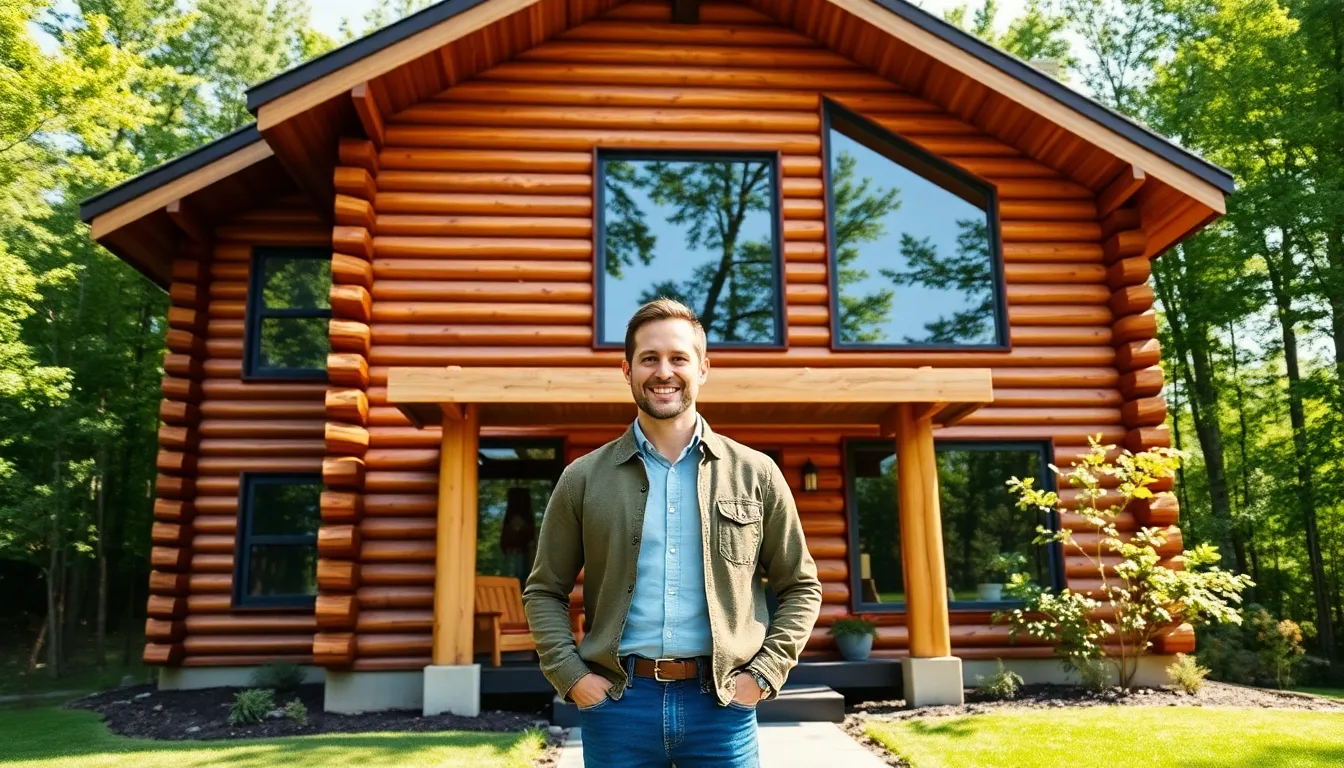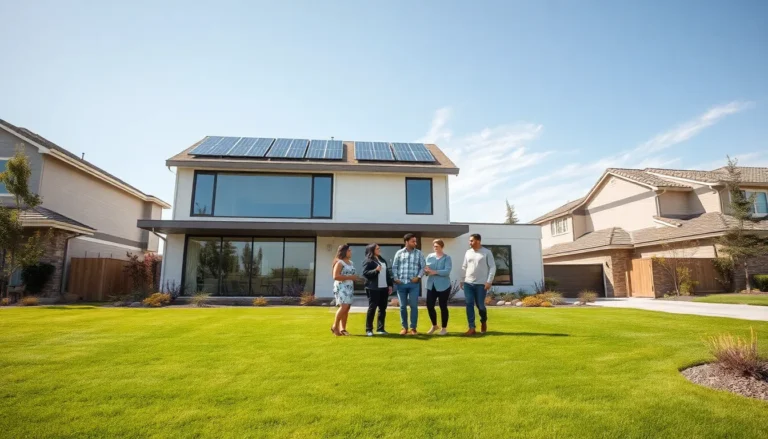Table of Contents
ToggleWhen you think of cozy cabins tucked away in the woods, it’s hard not to imagine all the charm and warmth a log home brings. But do they also manage to keep those energy bills from climbing higher than the trees? In this post, we’re diving into the intriguing realm of log homes and their energy efficiency. Spoiler alert: there’s a lot more to these wooden wonders than just rustic appeal. Let’s explore whether they’re as eco-friendly as they seem, with a sprinkle of humor and a dash of real talk.
Understanding Log Home Construction

Log homes have a unique construction method that sets them apart from traditional structures. Made primarily from timber, these homes are built using logs stacked horizontally, which offers a distinctive aesthetic and various benefits.
The construction also allows for natural thermal mass. Logs can absorb heat during the day and release it at night, leading to more stable internal temperatures. But, it’s essential to recognize that the way a log home is built will impact its energy efficiency as much as the logs themselves.
Thermal Properties of Logs
Logs possess remarkable thermal properties that can contribute to energy efficiency. Their density and composition enable logs to act as excellent insulators. A solid log wall can have an R-value similar to that of traditional insulation, effectively minimizing heat loss.
Let’s not forget about the air-tight nature of log homes. When properly constructed, these darling dwellings offer limited airflow, meaning less heat escapes during the winter months, and less cool air vanishes when summer rolls around. Efficient, right? But not all logs are created equal. The type of wood, moisture content, and even the diameter of the logs can influence overall performance.
Energy Efficiency Compared to Traditional Homes
To truly understand the energy efficiency of log homes, it helps to compare them to traditional stick-built houses. Let’s break it down:
Factors Affecting Energy Efficiency in Log Homes
When assessing energy efficiency, several factors come into play: construction techniques, the type of logs used, and of course, local climate. Also, how well the log home is sealed can heavily influence comfort level and energy costs. A well-sealed log home will outshine its traditional counterpart in energy efficiency.
Insulation and Sealing Techniques
When it comes to energy efficiency, proper insulation and sealing are paramount. Log homes can use foam insulation, which enhances traditional log insulation, or sealing compounds to fill gaps and prevent drafts. An efficient sealing technique creates a barrier that keeps outside elements at bay, making for a more comfortable indoor climate.
Heating and Cooling Systems
Another aspect worth discussing is the type of heating and cooling systems used. A log home can benefit from radiant floor heating, utilizing the thermal mass effectively, or even energy-efficient heat pumps. Traditional forced air systems may not take full advantage of the log structure’s natural properties, so it’s important to choose wisely.
Sustainability and Environmental Impact
Log homes are often seen as eco-friendly and sustainable options, thanks to the use of natural materials and timber that can be sourced responsibly. Many log home builders prioritize using local and sustainably harvested timber, so reducing their carbon footprint.
Besides, logs can be a renewable resource if managed correctly. Sustainable forestry practices help ensure that timber harvested for construction is replaced, promoting healthy forest ecosystems. Not to mention, a well-built log home can last decades, reducing the need for frequent replacements, which is a positive attribute for anyone concerned about environmental impact.
Cost Considerations and Savings
Now, let’s talk money. Log homes can have higher upfront costs compared to traditional homes, but they can also lead to savings down the road due to their energy efficiency. Lower energy bills can offset the initial investment, allowing homeowners to enjoy the benefits of a cozy, eco-friendly abode.
Plus, many insurance companies view log homes favorably due to their durability, potentially leading to lower insurance premiums as well. It’s essential to consider the long-term costs and benefits before making a decision.







